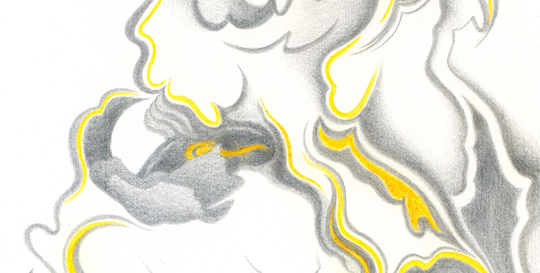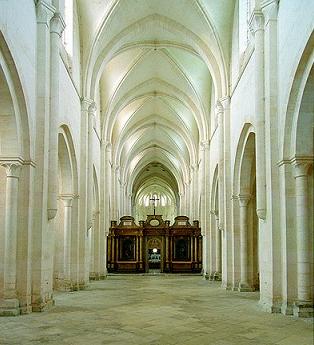La Vieille Vigne, silverpoint, watercolour
I have decided that I am going to try to have an exhibition somewhere entitled "Let the Stones Speak". Ever since I came to Noyers sur Serein, in Burgundy, last year, I seem to have been having conversations in silver with the most amazing diversity of stones. These stones, too, have been teaching me a great deal about the geology and history of the area. It is a fascinating journey which has led me into wine-making, the history of Cistercian monasteries in this area, mining ocre and early amazing frescoes and paintings, only done in tones of ocre, that can be seen in this area. And on and on. Interspersed with silverpoint drawing in my lovely eerie perch at La Porte Peinte here in Noyers, where I am at eye-level with the swirling, flashing swallows, I have been visiting magical places to learn more about history linked directly or indirectly to my friends, the stones.
Having got my show organised and displayed at the Musée de Noyers, I wanted to learn more about all the aspects of the stones, wine, medieval times and places. In other words, I am amplifying what I am going to talk about at Les Journées du Patrimoine at the Museum this coming weekend, 19th and 20th September.
My first visit was to the Abbey of Pontigny, near Chablis. Here, the industrious Cistercian monks settled in 1114 and built the most amazing and huge abbey, the first in Burgundy to adopt the new architectural ideas of the Gothic movement. Superb, diligent agriculturalists and managers of water resources, the monks also soon owned prime wine-growing areas in Chablis. By 1323, they had organised the production of Chablis wine and promoted it in such a fashion that subsequent generations of wine-growers there have hugely benefited from that initial organisation.
My next visit, on a cloudless sparkling day, was to Auxerre. Rising from the beautifully laid out promenades along the Yonne River, this ancient city boasts a wondrous Gothic Abbey of Saint Germain.
The vast complex now also houses a most interesting small art and history museum, reminding us of the important Roman presence at this communications crossroads well over two thousand years ago. And we are not talking about an impoverished outpost of the Roman Empire: beautiful glass, ceramic vessels, frescoed walls in villas, elegant statuary have all been found in Auxerre. Once again, wine comes into the story because the Romans were instrumental in introducing the vine to the area, partly to keep the soldiers occupied in periods of peace.
The Cathedral of St. Etienne stands proudly above the river, just along from the Abbey, surrounded by Auxerre's hallmark medieval timber-framed houses. As at the Abbey, ambitious bishops wanted the latest in architecture and tore down earlier versions of the church to achieve a Gothic glory.
Nonetheless, mercifully, the Romanesque crypt was left, remanent of an earlier church - and it is deeply serene in its massive quietude. There again, my stones led me in the right direction. The Romanesque church was adorned with wonderful red and yellow core frescoes.
To pair some of these discoveries and visits, I have posted a few more images of the drawings now on exhibition at the Museum. More another time.










